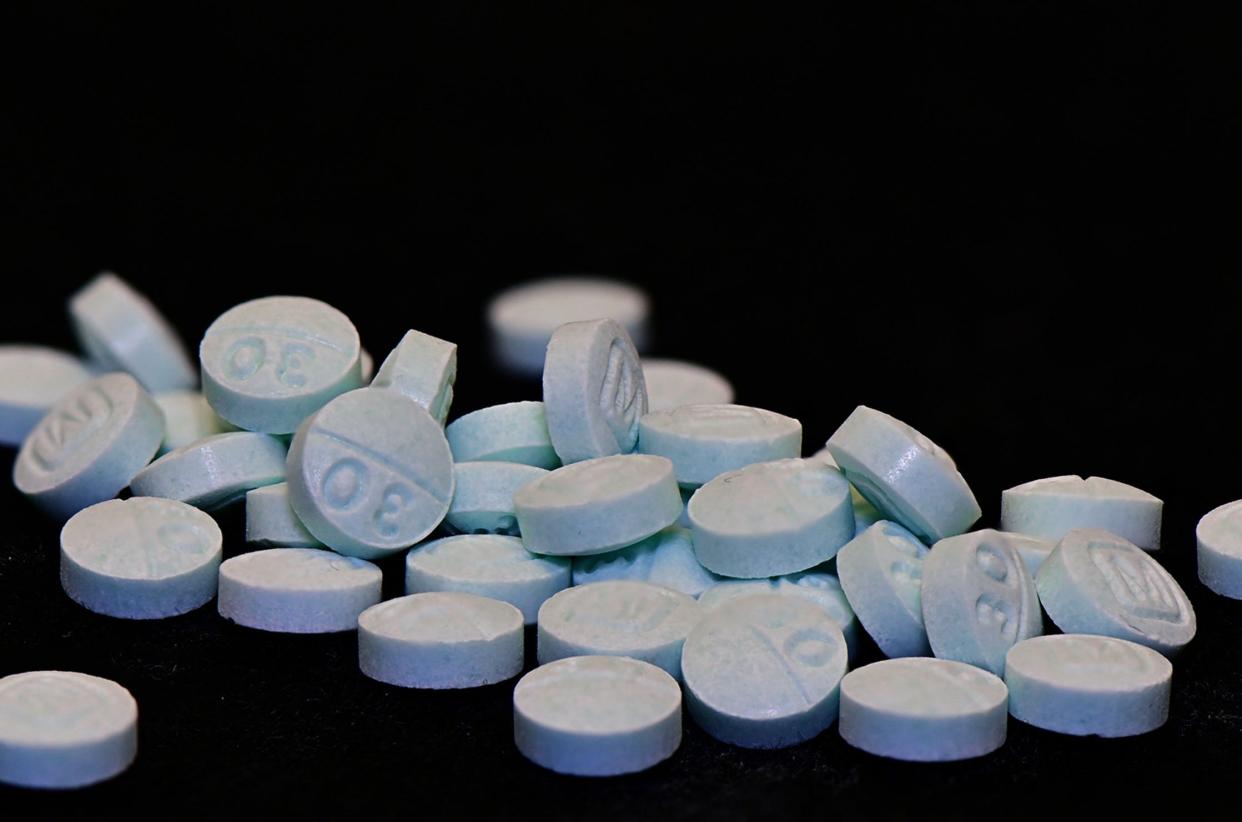It's an odd side effect of opioid abuse: Why are fentanyl users bent over. Here's why

It’s become one of the most startling signs of the fentanyl crisis happening across California: Seemingly zombified drug users slumped over in awkward positions.
Alternately called "the fentanyl fold” or "the fentanyl bend over," videos and photos of people reportedly using the drug have spread through social media.
What is the 'fentanyl fold'?
If you have ever witnessed what looks like seemingly intoxicated people bent over or frozen in place on sidewalks or in parks, you might be seeing someone in the throes of opioid use.
But why do the people look hunched over or moving like zombies?
"It's a degree of loss of consciousness and a degree of lost muscular control," Dr. Daniel Ciccarone, a UCSF professor of addiction medicine, told ABC7 San Francisco.
The "fentanyl fold" effect can reportedly kick in within two or three minutes after taking the drug, Ciccarone said.
And how long will the awkward body position last?
"Fentanyl can be a short-action drug and a long-acting drug. So some people they're back upright in 45 minutes to an hour. Some people could be longer than that," Ciccarone said.
Fentanyl abuse isn't the only opioid that can cause the awkward body reaction, Ciccarone said. Any opioid can have the same effect on users.
How many people have died of fentanyl poisoning in California and the United States?
Deaths related to fentanyl began to rise around 2019, according to the California Department of Health. In the last detailed study in 2022, the CDPH estimated nearly 6,000 opioid-related overdose deaths in California.
Nationwide, the Center for Disease Control and Prevention numbers show 84,181 opioid overdose deaths in 2022 to 81,083 and 81,083 in 2023.
What are the signs of a fentanyl overdose?
The CDPH advises people who suspect a friend or family of opioid abuse should look at for:
Falling asleep or losing consciousness
Not responding to stimuli like shouting, a pinch or sternum rub
Slow, weak or no breathing
Choking or gurgling sounds
Limp body
Cold and/or clammy skin
Discolored skin (especially in lips and nails)
Small, constricted “pinpoint pupils”
The CDPH and doctors advise people who use opioids or suspect family or friends are abusing opioids to carry Naloxone, a nasal spray medication that can reverse an opioid overdose.
Naloxone is safe and easy to use and works almost immediately, the CDPH says. It is available over the counter, without a prescription at pharmacies and other stores.
This article originally appeared on Palm Springs Desert Sun: What is the 'fentanyl fold'? How to treat opioid overdoses

